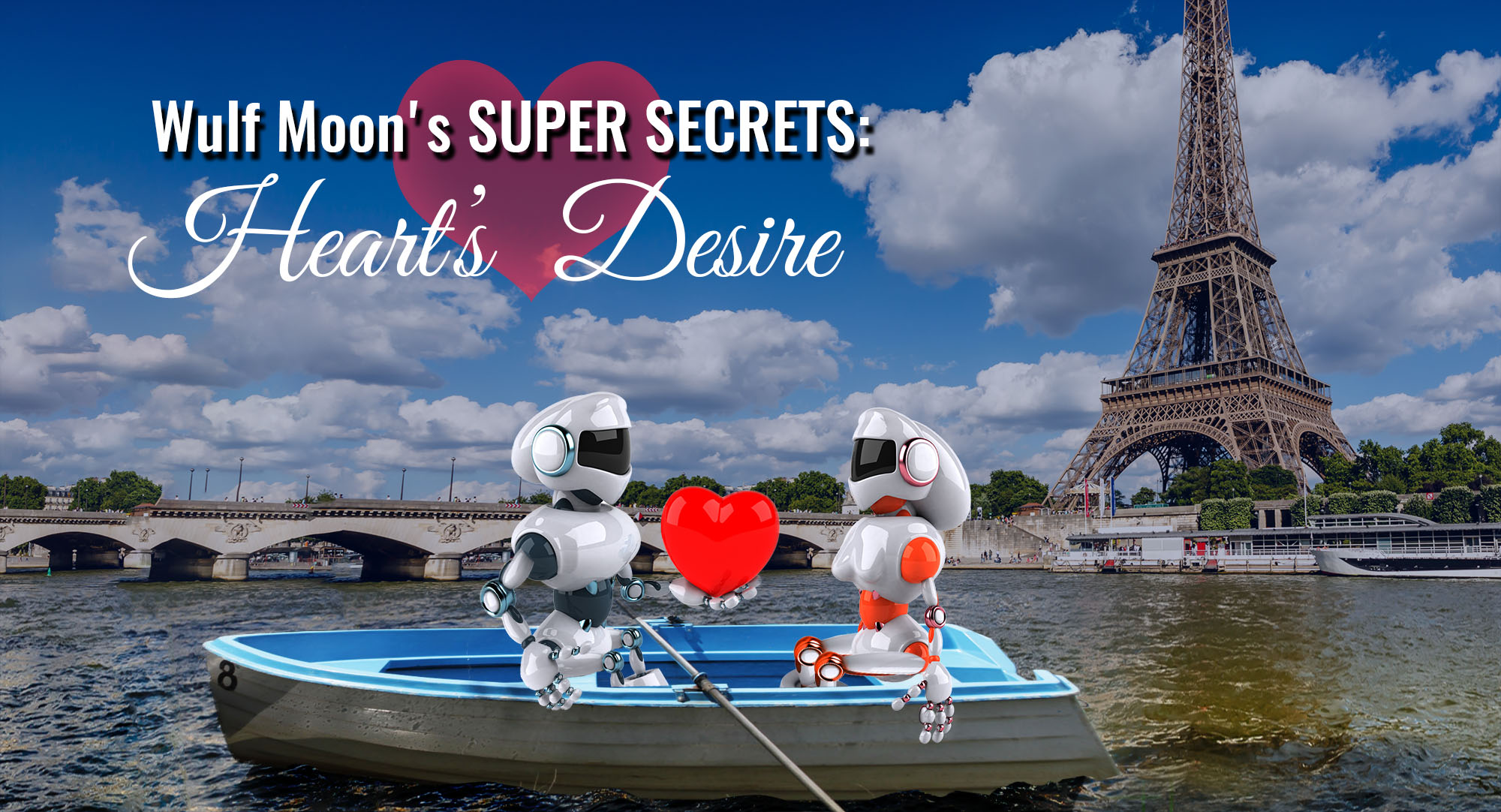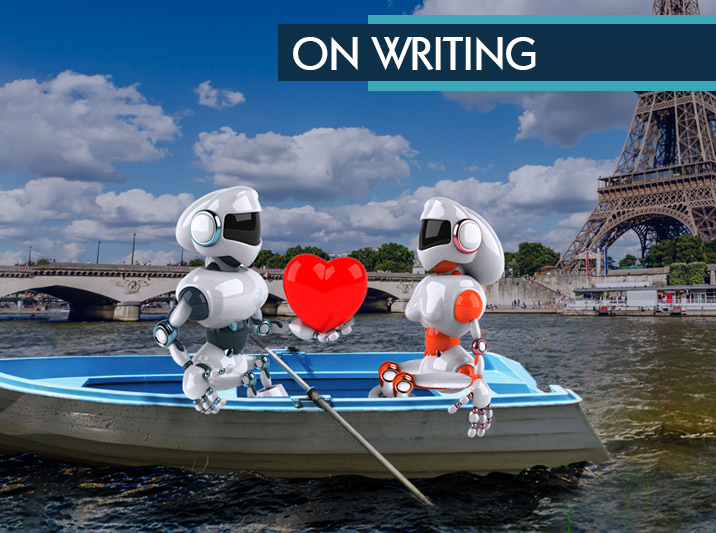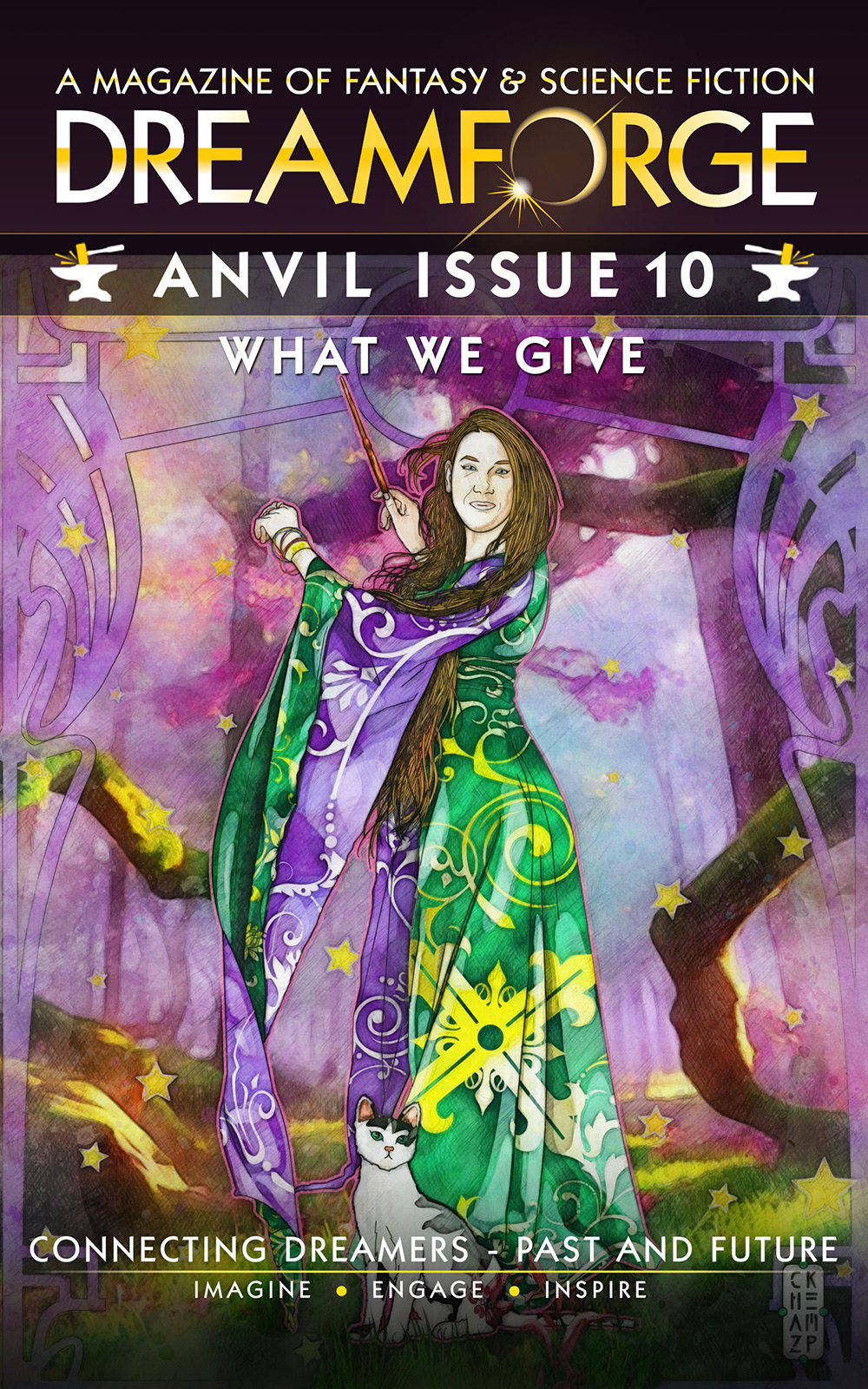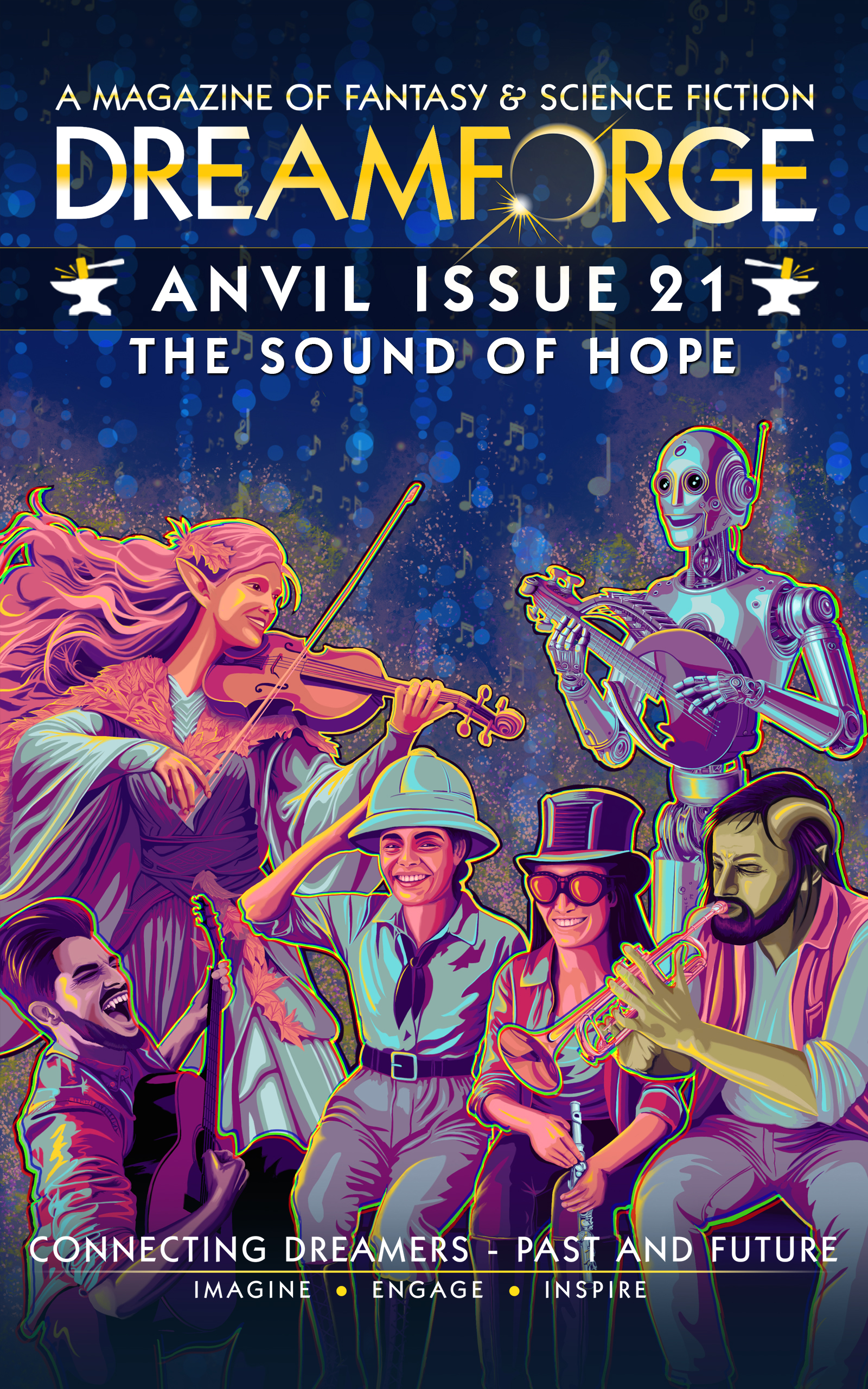
In one of my SUPER SECRETS of Writing workshops, I open with a basic statement about storytelling: “Your job is to swiftly establish a setting, place your hero in it, tell us what their heart’s desire is, and then rip it from them.” The attendees’ eyes go wide, and I do believe if I turned out the lights, I’d see lightbulbs popping on all over the room. By the end of the workshop, everyone is aglow— they realize they’ve just discovered gold, and they’re going to be mining it in their stories for the rest of their lives.
Heart’s Desire. Over the decades, I’ve taken countless workshops, seminars, and writing courses from college professors to New York Times bestselling authors. Many of those teaching were experts in their field, yet none of them talked about the concept of Heart’s Desire. Oh, they spoke plenty about the Problem, the Catalyst, the Inciting Incident. And it’s true: stories normally open with a character, in a setting, with a problem. But without establishing Heart’s Desire, a story might have a world-shattering problem that creates a screaming, fast-paced plot, but it won’t have the emotional elements necessary to stir readers’ emotions.
Good stories, great stories, moving stories must engage, not just the mind, but above all else, the heart.
What is Heart’s Desire?
Heart’s Desire is a person, thing, or state of being that the protagonist values and desires. It can be something precious to them that they hope to gain, or something precious that they have and don’t want to lose. Or, as in the movie Taken, it can be a combination of both. In the opening, the protagonist, played by Liam Neeson, desires to rebuild his relationship with his estranged daughter —something precious he hopes to gain— and then she gets kidnapped by sex slavers in Paris— something precious he does not want to lose. By the end of the tale, there’s a payout on both.
Heart’s Desire can take many forms. It could be anything that is of deep importance to your protagonist: a young man’s need for that rite of passage by owning his first car (think Sam Witwicky and the rusty ’77 Camaro in Transformers); a sorority girl seeking acceptance to an Ivy League college to win back her boyfriend (think Elle Woods and her need to get into Harvard in Legally Blonde); or a lawyer, tired of defending deadbeats, that craves a higher level of clientele (think Mickey Haller in The Lincoln Lawyer). Anything is game, as long as it matters dearly to your hero. It’s also a binding emotional hook if your readers can not only identify with that desire, but also crave that desire for themselves.
You’ve got a winner when your hero becomes the reader’s avatar to explore their own feelings, desires, and emotional needs as they go along on the journey you’ve created in your story.
Make a Statement of Heart’s Desire
Think of J.R.R. Tolkien’s The Hobbit. After establishing one of the most memorable opening statements of setting and character ever —In a hole in the ground there lived a hobbit— Tolkien tells us how cozy the lifestyle is for one homebody named Bilbo Baggins. If we haven’t discerned Bilbo desires nothing better than an uneventful life of comfort and his seven squares a day, Tolkien makes sure we understand this when the wizard Gandalf appears at his doorstep.
Gandalf: “I am looking for someone to share in an adventure that I am arranging, and it’s very difficult to find anyone.”
Bilbo: “I should think so— in these parts! We are plain quiet folk and have no use for adventures. Nasty disturbing uncomfortable things. Make you late for dinner! I can’t think what anybody sees in them…. Sorry! I don’t want any adventures, thank you.”
Does Tolkien leave us with any question as to what Bilbo desires most of all? Peace and quiet in his family’s warm home of comfort. Can we identify with that feeling? Certainly! We ourselves have probably said, “There’s no place like home.” Having a bit of life experience under our belt, we know unexpected adventures can indeed be nasty disturbing uncomfortable things. And unexpected guests that clean out fridge and pantry in one night? No, thank you! We can identify with poor Bilbo’s world being turned upside down. We’d likely feel the same in his circumstances. In fact, knowing how to engage his audience, Tolkien counted on it.
Tolkien is not subtle in that opening about Bilbo’s desire to stay at home. He has Bilbo repeat it, over and over, just so we don’t miss it. It’s a statement of Heart’s Desire. And, after showing us how dear this heart’s desire is to Bilbo, like any good writer, Tolkien proceeds to rip it from him. The very next day, in fact. Just to kick a hobbit where it really counts —in their larder— Tolkien sends into Bilbo’s home thirteen hungry dwarves with terrible table manners and a quest to take back their ancestral home from a vicious dragon named Smaug.
A writer cannot be too blunt about Heart’s Desire. Let me restate that. A writer cannot be too blunt about Heart’s Desire. It’s what the story is truly all about for the protagonist, and it answers two important questions every reader asks at the beginning of a story: WHAT’S THIS STORY ABOUT? and WHY SHOULD I CARE? We’re only human, after all. We want to know we’ve got a good reason to invest our time and emotions in this character and their tale. So, get to the heart of the matter, and get there quickly. A statement of Heart’s Desire does just that. It’s the author laying it on the line, spelling out in the opening scene exactly what the protagonist holds most dear. It’s a sign lit up on the story’s marquee saying THIS IS WHAT IT’S ALL ABOUT. Don’t be bashful about this. Be bold. Hit it with a spotlight. Inquiring minds want to know.
Inquiring minds need to know.
Ripping Away Heart’s Desire: AKA The Problem
When the Problem is introduced into the story, the Problem’s ugly size sixteen combat boot usually drops directly onto the path— the hero’s heart’s desire. Now, everything about obtaining or protecting that desire is put in jeopardy. And if our hero hopes to secure her heart’s desire, she must go on a quest to get rid of that giant obstacle that’s keeping her from obtaining it. You desire more than anything to return home, Dorothy? No problem. You just have to figure out how to kill the Wicked Witch of the West. You’d love to have more than one small chocolate bar a year, starving Charlie? No problem. You just have to survive a crazy chocolate factory tour.
Does this mean the Heart’s Desire in the opening is chiseled in stone, immutable? No. Quite often, a protagonist’s Heart’s Desire at the opening will change by the end of the story. Not always, but often. This is because one of the requirements for meaningful stories is that the protagonist must change by the end of the story. They need to learn some valuable personal lesson by the end, otherwise, their quest appears meaningless, even though they might have saved the world.
Sometimes, the hero learns the thing they most desired was not the best thing to have desired. Sometimes, they find something more important to claim for their heart’s desire. Sometimes, they get their desire, but it’s not at all what they thought it would be. Sometimes, they sacrifice their deepest desire in order to save others. Sometimes —and romance stories revolve around this one— they get exactly what they desired and live happily ever after.
There are many ways to play this, but strong stories open with your protagonist’s heart’s desire, and if you can sneak it into the first couple of pages, you’re going to have a more potent story. We will know what your protagonist cares about, what they hope and long for, and we’ll expect a payout in some way on this desire by the end of the story. And if you can make us care about your hero and his desire, we’re going to feel troubled when you step in and dash that hero’s chance at happiness all to hell.
Think about Star Wars: A New Hope. Young Luke cares about one thing—
getting off that sand trap of a planet. He’ll do anything to escape Tatooine, even join the Imperial Academy if it helps him get away! It’s a naïve young man’s dream— in seeking a way off Tatooine, he’d be trading Uncle Owen’s tough farming yoke for the Empire’s galaxy-crushing chokehold. But Luke only sees the Academy as his chance to get off the family farm and see the galaxy. In his mind, it’s a path to freedom. Still young-person thinking, but we can identify with it because we were young once. We know that feeling of wanting to be out on our own.
Then, the Empire kills his aunt and uncle while Luke’s out searching for his ‘droid. Luke immediately recognizes his desire to join the Academy was misplaced. The battles going on in the galaxy are not so far away after all. A deeper fire now burns within this young man’s heart. He is consumed with the need to fight back. His heart’s desire changes.
Luke expresses this new heart’s desire to Obi-Wan. “I want to learn the ways of the force and become a Jedi like my father.” See? His heart’s desire changed to one vastly more important, because he grew up in a hurry. Facing death does that. And for the rest of the tale, which spans three episodes (A New Hope, The Empire Strikes Back, Return of the Jedi), it is ever uncertain whether Luke will obtain his heart’s desire. Even in the last episode, Return of the Jedi, when Luke has become a Jedi! Why?
Because Luke’s heart’s desire has deepened again. Now, there’s something more important to him— saving his father. This quest is so dear to him, Luke is willing to sacrifice all if it means saving his father, Darth Vader, from the dark side. He puts everything on the line —his friends’ lives, the rebellion and all it stands for, even his own life and his work to become a Jedi— if it means he might find a path to his father’s redemption. He comes within a hairbreadth of losing it all, but we discover that’s what it often takes when the stakes to obtain your heart’s desire are so high.
Here’s another one: a classic romance adventure tale, Romancing the Stone. Again and again in the opening scenes, we are told our protagonist —romance writer Joan Wilder— is lonely and would love to have a man like her daring novel hero Jesse in her life. Alas, she’s clearly not the kind of person that would attract a character like Jesse, so she writes about her heart’s desire instead.
But by the end of the crisis that was thrust upon her, Joan Wilder has made the tough choices that create growth. She has now become <spoiler alert!> a woman that can face off with criminals and killers, throw a switchblade, even roll the evil colonel off her and watch him tumble into a crocodile pit. Jack Colton, the man that’s helped her through her trials, stares at her admiringly. “You’re gonna be all right, Joan Wilder.” She has earned his respect because she’s now a different woman from the helpless one he first met— she has grown through her trials. And because of this, in the end, she obtains her heart’s desire. Jack Colton returns, fulfilling her desire for a companion that was stated repeatedly at the story’s start.
Joan Wilder gets her real-life version of Jesse.
You can find plenty of other examples. Go look for them in your favorite short stories, your favorite books, your favorite movies. Heart’s Desire might be to reclaim one’s honor, to find love, to live a quiet life inside your Hobbit hole, but it’s going to be there, and in great stories, you’ll see it glowing in the heart of the protagonist early on. It won’t be a mystery. There will be a strong indication or statement of Heart’s Desire.
So, there you have it. Have you heard of the Seven-Point Plot? It should be the Eight-Point Plot (I actually teach nine, but we’ll save the last for a future article). A story should open with 1. A Character. 2. In a Setting. 3. With a Heart’s Desire. 4. And then, the Problem (which is often the reason for the inciting incident that’s keeps the hero from their heart’s desire). 5. They must Try. 6. They must Fail (or Succeed, but the success creates more problems). 7. The tries must escalate to a final Climax. 8. Win or lose, the story is concluded by Denouement/Resolution, which is really the validation that the protagonist achieved their heart’s desire (or lost it if the story is a tragedy). See? Eight essential plot points, not seven.
This is why we read many stories that don’t grab our hearts. The story is technically correct —it’s got all seven points, and it may have a hellishly difficult problem that challenges the hero in solving it— but without Heart’s Desire, it has no heart. It’s missing the emotional element wrapped up inside the protagonist, and the writer never reveals it on the page. The writer must show us the desire burning deep inside their protagonist that motivates them to take on the risks involved in the quest.
The writer must give us a reason to believe and to care.
Make sense? Good. This is the single most important lesson I teach. I’m betting you’ll see stories and movies in a new light from now on. And if you truly understand a thing, you have the knowledge to help you create that thing. Knowledge is power. This knowledge will transform your stories. How do I know? I’ve seen it do so for many emerging writers that took my workshops on the subject. Many won major awards and launched professional careers after utilizing this knowledge in their stories. Focusing short stories and novels on Heart’s Desire works.
Now ask yourself: Do I state in the opening scene of my story what the protagonist’s heart’s desire is? It may transform as the story unfolds, but do I reveal a deep desire in the heart of my protagonist, something they care so deeply about, they’re willing to take great risks to achieve it, or to get it back? If we fail to clearly reveal their emotional motivation, our stories will fail to reach their fullest potential. Because we are missing the most crucial element … of the EIGHT-Point Plot.
In light of this, ask yourself these questions before you write your next story:
- Do my first two pages reveal what my protagonist’s heart’s desire is?
2. Does everything that follows in the story stay completely focused on the protagonist’s attempts to obtain their heart’s desire?
3. Does my protagonist get the thing desired by the end?
4. For a character growth twist: Do they come to realize the thing originally desired may not have been the true or proper desire?
5. For a tragic twist: Do they get the thing desired, but it destroys them? (Think Paul Atreides in DUNE MESSIAH.)
Embedding Heart’s Desire within our heroes make for very real, and very human, stories. It’s the engine that provides the motivation for our characters and gives them the ability to make great sacrifices to achieve the thing desired. More than that, Heart’s Desire makes us reflect on our own motivations and choices we’ve made to gain our own important desires in life. They create the strongest stories because they’re packed with emotional punch.
So, put Heart’s Desire into the primary equation for writing a story. Don’t make it a secondary or nonexistent thing. It’s THE most important aspect of any story. It’s what motivates your hero to action. It’s what makes a story moving. Memorable. Strong.
And strong stories that touch the heart win.
Do I see lightbulbs popping on? Good. I can turn out the lights. You can see your way out.












